Podcast: Play in new window | Download
Subscribe: RSS
Colorado did it last week. Don’t be surprised if Oregon is next.
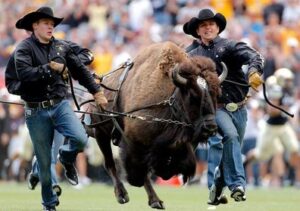
By exiting my newly re-named Pack-12® Conference, the Colorado Buffaloes will mosey eastward across the plains into the Midwest to compete once again in the Big 12 Conference.
Colorado joined the original Big Eight Conference in 1947. That conference morphed into the Big 12 in 1996.
In 2011, the Buffaloes stampeded westward to join the Pac-12 Conference. The Buffs were expected to become a competitive force in their new athletics conference. After a dozen years playing against the West Coast universities, CU has languished in relative mediocrity in most major sports.
The Pac-12 teams are not significantly better than Colorado’s former Big 12 Conference foes.
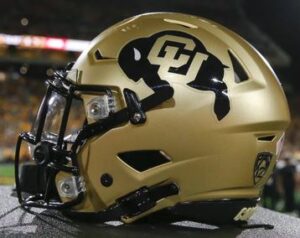
The Buffaloes would have been bottom feeders in most every major conference in America over the past decade. The school’s athletics department has been a major disappointment and deserves the blame of loyal sports fans of the university.
This spring, new hope for the CU football team arrived with the announcement of former NFL Hall-of-Famer Deion Sanders as the new head coach. “Coach Prime” jumped into college coaching at Jackson State University a couple of years ago and turned around that program almost immediately.

His challenge at Colorado will be as high as the Rockies.
Deion Sanders is bringing some much needed excitement to Boulder after his arrival. His new contact (worth about $5 ½ million per season) has already paid for itself with skyrocketing demand for season tickets.
The football team hosted nearly 50,000 fans for its annual spring exhibition game a few months ago. The previous spring football game record crowd in Boulder was just 17,800.
Season ticket sales for Colorado’s 2023 home football schedule sold out – in April. After seeing only one winning season on the football field since 2006, Colorado Buffaloes fans are starved for some success.

If Coach Deion Sanders can deliver a winning season to Boulder within his first two years as the team’s head coach, his legend as a coaching Pied Piper will grow.
So, why is Colorado bolting for the Big 12 Conference in 2024?
Colorado’s decision seems to be motivated by a combination of logistics and, of course, money.
The geography problem with forcing the Buffaloes to play West Coast schools was flawed from the start. They were the only Pac-12 Conference team located east of the Rocky Mountains. The athletic teams had to travel more than 1,000 miles across the Rockies to play competitors located in California, Oregon, and Washington.
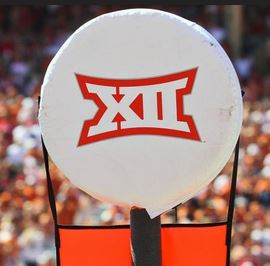
By moving back into the Big 12 Conference, the Buffs’ road trips will no longer involve traversing the Rocky Mountains and, for the most part, be a little shorter for its athletic teams.
Then there’s the money.

The Big 12 Conference scored a long-term lucrative TV deal ($2.3 billion over six years) with ESPN and Fox through 2031. With the University of Texas (Austin is the #47 TV market) and the Oklahoma Sooners (OKC is #45) departing the Big 12 for the SEC in 2024, the Big 12 Conference has effectively replaced them by adding the #18 TV market in Denver/Boulder, Colorado.
The Big 12 and Colorado are going to benefit from this reunion.
How will the Pac-12 (Minus 3) Conference respond?
For almost a full year, the Pac-12 Conference has been telling everyone that they are in the process of negotiating a new television deal. We are still waiting.
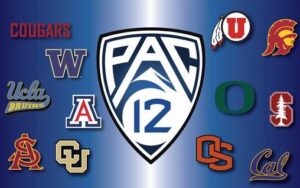
This potential deal then took a brutal hit after both USC and UCLA announced that they were leaving for the Big Ten Conference in 2024. With those two nationally known schools leaving the Pac-12, the league lost the important Los Angeles television market (#2 in the US) with more than ten million TV viewers.
Last week, Colorado (and its #18 TV market) joined the eastward exodus.

The Pack-12 has been reduced to the Not-Quite-Packed-Yet 9. This wounded West Coast conference still retains several prized television markets which advertisers covet.
As of this writing, the #6 TV market San Francisco (University of California-Berkeley), #12 Phoenix (Arizona State), and #14 Seattle (Univ. of Washington) remain part of this nine team athletics conference.
San Diego State of the Mountain West desperately wants to become Colorado’s replacement in the Pac-12. The Aztecs would add the #28 television market in San Diego. More importantly, SDSU is positioning itself as Southern California’s new favorite team within the Pac-12 Conference. The marketing opportunities for the school would be huge.

However, SDSU’s problem is that they will owe the Mountain West Conference a minimum of $17 million in exit fees if they give a full year’s notice to leave. The cost could rise to $34 million if San Diego State desires to leave the Mountain West without providing a full year of notice. Ouch.
Will more Pac-12 schools leave soon?
That is a tricky question. The long-awaited new TV deal (when and if it ever comes) will need to be fairly competitive to what a team would receive by moving to the Big 12 or Big Ten Conferences.
There has been some recent chatter that the biggest remaining draws for the Pac-9 Conference might demand something greater than an equal share of any new television deal in order to stay put. For example, the University of Washington and Oregon might ask for up to an unprecedented “double” share if they were to remain a part of the conference.

On the other hand, would the other Pac-9 schools be willing to sweeten the deal for one or more of the more dominant conference teams just to keep them in the group? Would California, Stanford, or Arizona State be willing to reduce their own percentages of TV revenue just to keep a couple of the whiners happy?
Perhaps, but I wouldn’t.
What will happen to the former Pac-12 Conference?
Yours truly is definitely “old school”. I love the long-time conference traditions of college football.
Seeing both USC and UCLA move to the Big Ten Conference is regrettable. They are forcing their athletic teams to fly thousands of miles across country to play opponents. That is an unnecessary burden for all of the student-athletes (remember – the other conference schools must fly across country for games in Los Angeles, too).
It makes the entire Big Ten Conference look greedy.
However, USC and UCLA are positioning themselves for a future in which they (apparently) envision fewer teams playing in the upper division of college athletics. They bailed out of the Pac-12 Conference, because they believe the conference will eventually collapse.
The remaining Pac-12 teams are located in some of the largest US metropolitan areas. That said, most of American sports viewers don’t stay up late enough to watch Pac-12 night games – regardless of the sport. The Pac-12 Conference simply does not capture as many television viewers for their games as schools located in the Eastern and Central time zones.

When was the last time which you stayed up past midnight to watch a Pac-12 football or basketball game? Same here!
It is logical to expect the market value for the Pac-12’s new television deal will be lower than recent deals made with major athletic conferences located east of the Rockies.
Still, the remaining Pac-9 Conference members might decide to wait for the new television contract details to be announced.
If the deal is sweet enough, they could stick with the current smaller number of teams and split a bigger TV pie. Plus, this new smaller conference structure gives each member institution a better chance to reach the expanded 12-team College Football Playoffs. The conference will be assured of placing at least one team into the playoff field.
But what if the new Pac-12 TV deal stinks?
At that point, the Pac-12 Conference will implode.

Oregon, Washington, Arizona State, Utah, and Arizona will beg the Big 12 or Big Ten (good luck with that!) to take them in. The Big 12 has reportedly been courting the University of Arizona and, perhaps, Utah for some time now. Geographically, those teams would make a good fit.
For Washington State, Oregon State, California, and Stanford, a merger with the Mountain West Conference seems the most likely outcome.
If the Pac-12 implodes, could the same thing happen to the ACC?
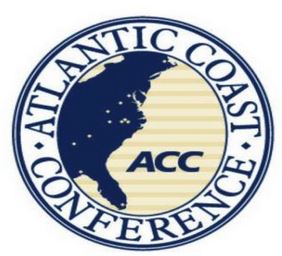
Yes, indeed! Stay tuned.

